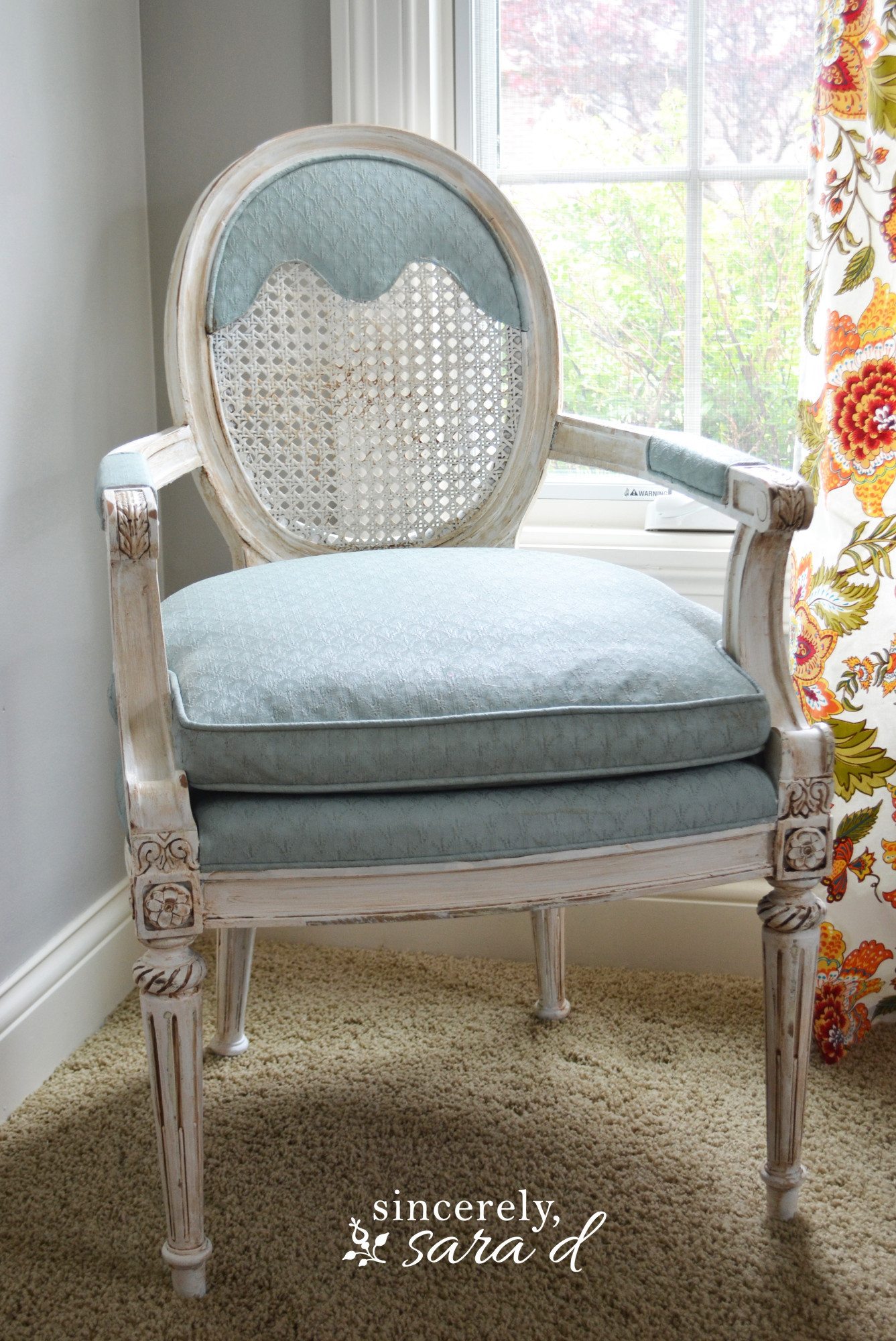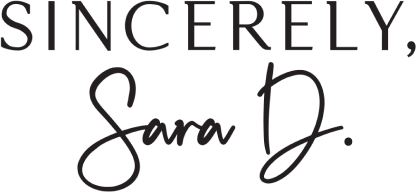
Chalk paint has been popular for years, and I have used it more times than I can count on various projects. After all my experience with it, I thought it would be helpful to share a post on all you need to know about chalk paint.
Chalk paint saves time – there isn’t any prep, sanding or need for a primer! You can paint over anything: laminate, wood, glass, plastic, and even fabric.
Typically you will add two coats of chalk paint (it dries quickly) and seal with either a wax or water-based sealer. You can sand if you want the distressed look.

My favorite chalk-based paint is Amy Howard’s One Step Paint.
Before you begin:
- Make sure the paint is well mixed. Tip the can over for 30 mins and then give it a good shake.
- Clean/dust your piece before painting.
While you’re painting:
- Keep in mind the paint dries very quickly!
- Don’t load your paint brush with paint. The paint is thick.
- Quick brushstrokes work best.
- Most pieces take 1.5 – 2 coats of paint.
- In between coats of paint, put your brushes in ziplock bags.
- Keep your paint covered. It can thicken when exposed to air.
- You can use a roller or *sprayer for chalk paint.
- You can add one coat and add a wash of a second coat (or even second color!) with watered-down paint.
*When using a sprayer, you will need to add some water to the paint. I talk more in detail on this later in this post.
While you’re *waxing:
- Don’t overwax! Think about how you apply hand lotion – put on a small bit and massage until it is absorbed.
- Use a brush to apply the wax and a lint free cloth to wipe off excess.
- YOU MUST USE CLEAR WAX FIRST BEFORE APPLYING THE DARK WAX.
- The dark wax adds dimension and age.
- You can use the clear wax as an eraser if you’ve added too much dark wax.
*waxing works great on most pieces, but I would NOT recommend it for table and desk tops, cabinets, and floors.
*UPDATE: Waxing is still a great option for some pieces, but recently I’ve been using a brush on matte sealer, and this sealer is my favorite.
After you’re done painting:
- To clean brushes (paint & wax), wash with soap and water.
- Buff your piece 24 hours after your last coat of wax if you want a (slight) glass effect.
Want all you need to know about chalk paint as a printable? GO HERE to print them out!
Below are several chalk paint projects I’ve done over the years. Come see what worked well and what didn’t!
Using Chalk Paint on Cabinets
Chalk paint can work well on cabinets, but you need to be careful about the sealer you use – DO NOT USE WAX. I did and ended up having to repaint my cabinets (see more on why I repainted my cabinets HERE). Wax doesn’t work well on cabinets (think about heat in a kitchen).

When Not to Use Wax
Wax is a great sealer for chalk paint in most cases, but as I mentioned above, DO NOT use it on cabinets. I would also stay away from table tops, desk tops, and floors.
However, in other cases (I painted my daughter’s bedroom set and sealed it in wax over 5 years ago and it still looks great), wax is a great sealer. You can see all the details on how to apply wax to chalk paint HERE.

Chalk Paint can be used in a sprayer
This is a fantastic way to apply chalk paint – not brush strokes and a smooth finish. See more on using chalk paint in a sprayer HERE. Using a sprayer provides a great cabinet finish.

Chalk Paint Can Be Used on Fabric
Chalk paint can be used on fabric. It’s not the perfect solution (the result feels like pleather), and it can get expensive and timely since fabric soaks up so much paint. However, you can see more HERE on painting fabric with chalk paint.

Are you completely new to chalk paint? GO HERE for a tutorial on applying chalk paint.
Chalk Paint Can Provide a Faux Wood Look
I have used chalk paint to make pieces that aren’t wood (like our kitchen hood), look like wood. Go here to see the wood look paint technique!

Chalk paint was once expensive and hard to find, but it is now available at every hardware store and can often be mixed to create the perfect color for your space.
Don’t hesitate to comment with any questions! I tried to cover all you need to know about chalk paint, but I’m sure I missed a few things.

Are you new to my blog? Go HERE to see my home tour and HERE to shop for items I use in our home.


I have matching dining table and chairs, hutch, and end tables/accent tables. They are wood and rot iron, 18 years old and have scratches and damage. But they are so sturdy and we still love the style so I’d like to chalk paint them.
You mentioned that you don’t recommend using wax for table tops. Is the chalk paint sturdy and wear well on tables that are used daily?
Or do you recommend something different?
Hi Sherri, Chalk paint should work well on the table top. Instead of the wax, try a water-based sealer like a polycrylic. Good luck!
What color is on the kitchen cabinets and who is it made by? Thank you so much!
Cory
I think this should help answer your question: https://sincerelysarad.com/painting-kitchen-cabinets-done/
can you use chalk paint on office furniture? you know those file cabinets that are made of metal? would you give a light sanding first so the paint will grip to the cabinet?
I’ve never tried chalk paint on metal, but I assume it will work. Sanding may help with grip and is probably a great idea. Let me know if you go for it, and if it works!
The other options is spray paint – since it’s oil-based it should be great!
Thank you for this post! I am in the process of making some ‘farmhouse’ wood signs. I am planning on painting the background of it, and staining the frame. Is white chalk paint good for this? If I am planning to add a phrase to the sign, should I skip the wax altogether? Or after I paint the writing on? Thank you!
Hi Kara! You can definitely use chalk paint for this, but I don’t think you need to add the wax – unless you want to. Wax is a protective furniture to protect, and no one would really be touching or using the sign like furniture would be used.